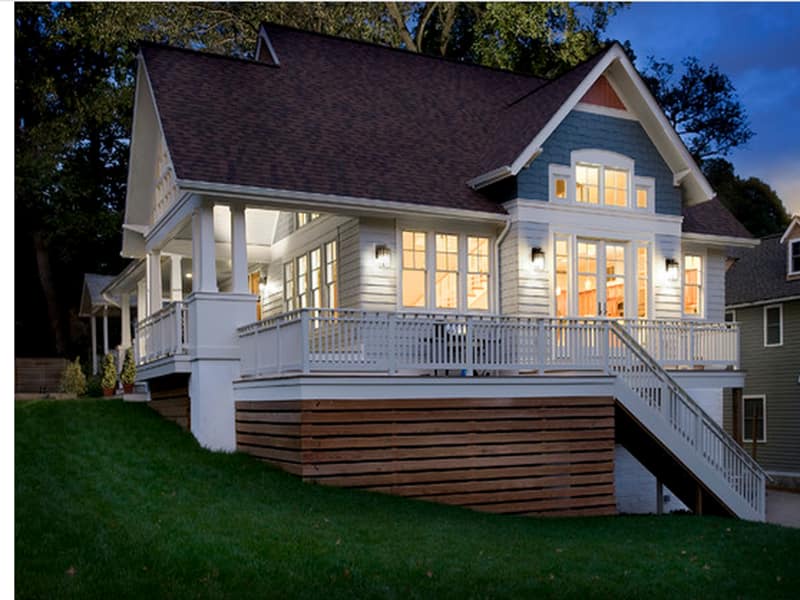Introduction
When it comes to home construction and maintenance, one often overlooked yet essential element is house skirting. This inconspicuous feature not only contributes to the overall aesthetic appeal of your home but also serves various practical purposes. In this article, we will delve into the world of house skirting, exploring its functions, benefits, and why it's a crucial component for any homeowner.
What Is House Skirting?
House foundation skirting, also known as underpinning, is the material or barrier installed around the base of a house, covering the area between the foundation and the ground. This typically includes the space between the ground and the first floor of the house. Skirting materials can range from vinyl, wood, brick, or concrete, depending on the homeowner's preference and the local climate.
Enhancing Curb Appeal
Boosting Aesthetic Value
One of the primary purposes of house skirting is to enhance the curb appeal of your home. When done correctly, it can transform the appearance of a house, making it look more polished and complete. Skirting materials come in various textures, colors, and designs, allowing homeowners to choose a style that complements their house's architectural features.
Concealing Imperfections
House skirting also plays a significant role in concealing imperfections. It hides unsightly foundation elements, such as vents, pipes, wires, and gaps, giving your home a more refined and seamless look. This, in turn, adds value to your property and can be particularly beneficial when selling your home.
Insulation and Energy Efficiency
Temperature Regulation
House skirting acts as an additional layer of insulation for your home. It creates a barrier between the external environment and the space underneath your house. This helps regulate the temperature inside your home, keeping it cooler in the summer and warmer in the winter. As a result, you can enjoy reduced heating and cooling costs.
Pest Control
Skirting also serves as a defense against unwanted guests, such as rodents and insects. By sealing off the underside of your house, it prevents these critters from finding their way into your home. This not only ensures your family's comfort but also protects your property from potential damage.
Structural Support
Preventing Soil Erosion
House skirting helps prevent soil erosion around the foundation of your home. Without proper skirting, rainwater can wash away the soil, leading to foundation instability and potential structural damage. Skirting acts as a barrier, diverting water away from your home and preserving the integrity of the foundation.
Stability and Durability
Additionally, skirting provides stability and durability to your house. It supports the foundation by preventing shifts in the soil underneath. This structural reinforcement is essential, especially in regions prone to seismic activity.
Compliance with Regulations
Meeting Building Codes
Many local building codes and regulations require the installation of house skirting for safety and aesthetic reasons. Ensuring compliance with these codes is essential when constructing or renovating your home. Non-compliance can result in fines and delays in your construction project.
Conclusion
In conclusion, house skirting is not just an optional aesthetic feature; it serves multiple crucial functions for homeowners. From enhancing curb appeal to insulating your home, providing structural support, and complying with local regulations, the importance of house skirting cannot be overstated. So, when planning your home construction or renovation, don't forget to include this unassuming yet vital element.
Frequently Asked Questions
1. How much does house skirting cost?
The cost of house skirting can vary widely depending on factors like material choice, size of the project, and labor costs. On average, it can range from a few hundred to a few thousand dollars.
2. Can I install house skirting myself, or should I hire a professional?
While some homeowners may choose to install skirting themselves, it's often recommended to hire a professional, especially if you're not experienced in construction. Proper installation is crucial for the skirting to fulfill its functions effectively.
3. What is the lifespan of house skirting?
The lifespan of house skirting depends on the material used and how well it is maintained. Vinyl skirting, for example, can last for 10-20 years or more with proper care and maintenance.
4. Are there any maintenance requirements for house skirting?
Maintenance requirements vary depending on the material. Generally, you should inspect skirting regularly for damage or wear and tear. Clean it as needed and make repairs promptly to ensure it continues to function correctly.
5. Can house skirting be customized to match the style of my home?
Yes, house skirting is available in various styles, colors, and textures, allowing you to choose a design that complements your home's architecture and personal preferences.


No comments yet